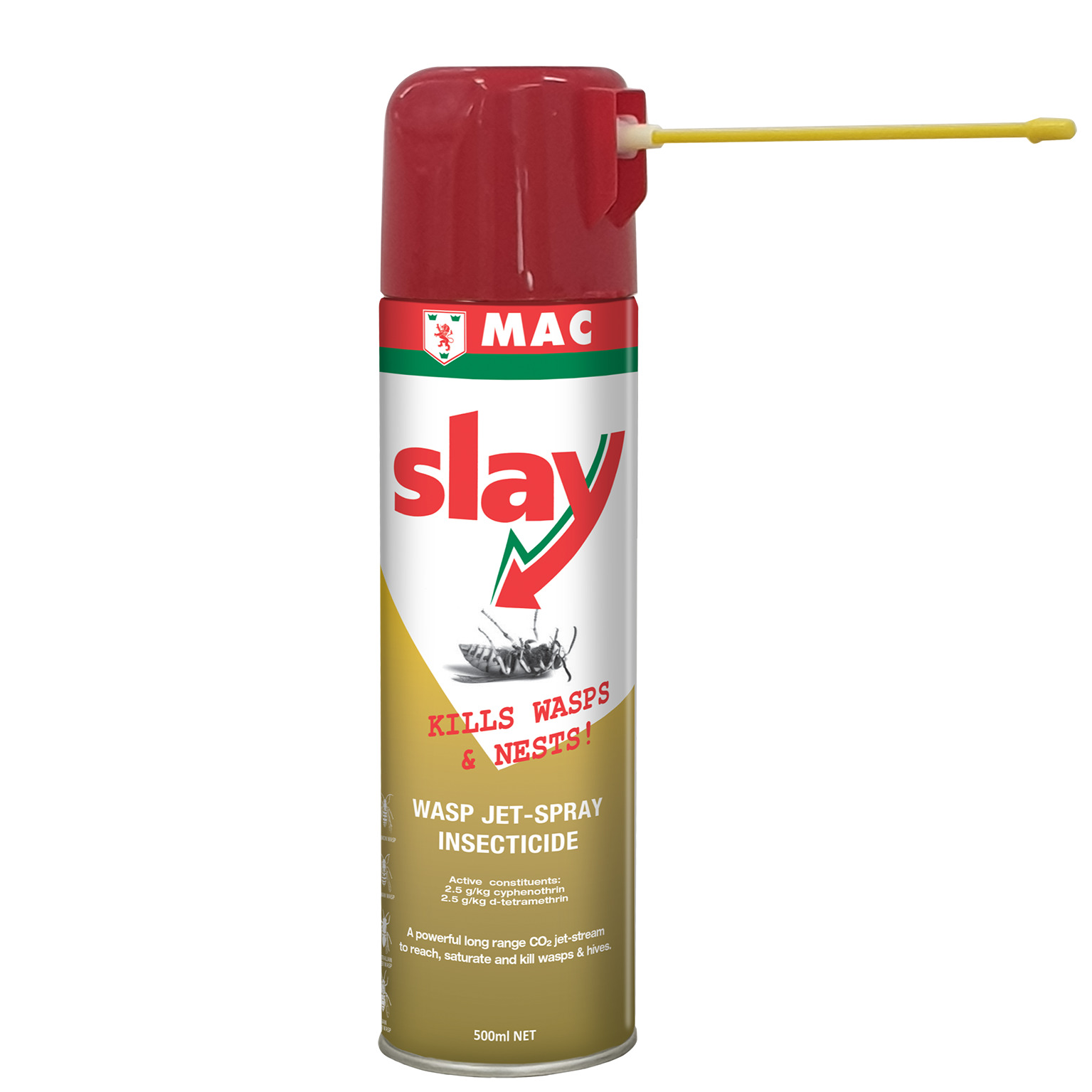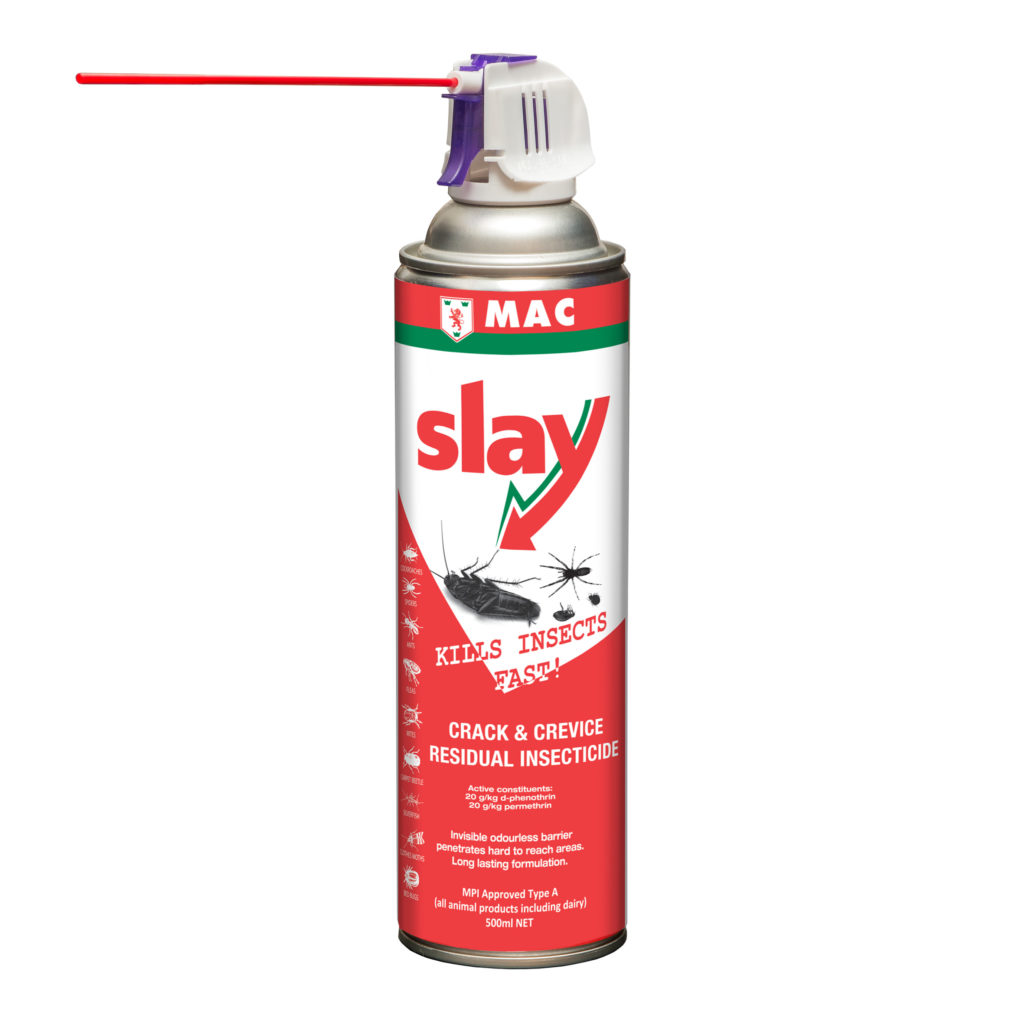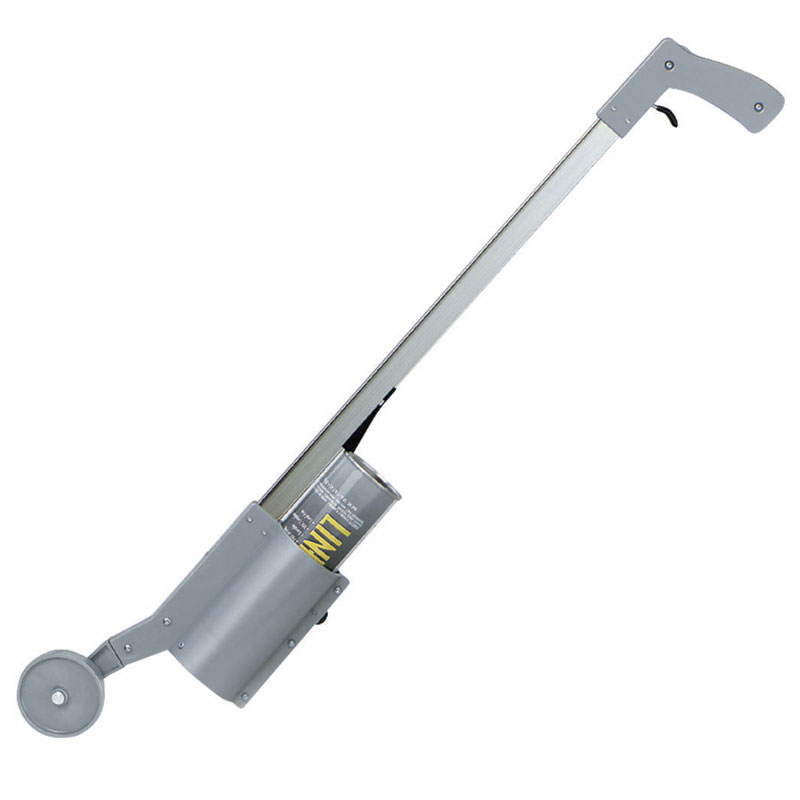MAC Slay Wasp Jet-Spray (CO2) Insecticide 350g
Categories: Insecticides, Cleaning, Food Manufacturing, Healthcare, Pest Control, Wasp & Ant


MAC Slay Wasp Jet-Spray (CO2) Insecticide 350g
MAC Slay Wasp Jet-Spray CO2 Insecticide 350g delivers instant, long-range wasp elimination for homes and businesses.
Powerful CO2 formula targets nests safely from a distance.
MAC Slay Wasp Jet-Spray CO2 Insecticide 350g is engineered for professional, fast-acting wasp control in challenging locations:
- Instant knock down and high kill rate of adults wasps and wasp larvae
- Effective against the common wasp, European wasp, Australian wasp, Asian paper wasp and hornets
- Long range high output trigger and extension tube enables the nest to be quickly soaked from a safe distance
- Caron dioxide propellant ensure low electrical conductivity
- Wear protective clothing, do not shine a light source directly onto the nest as wasps may travel up the beam of light
- Do not stand directly beneath the nest when treating it
- Made in New Zealand
Find Nearest Stockist
Details
Applications
Ideal for sporting and hunting equipment
Decoys, mai mais and blinds
Vehicles & gear
Frequently Asked Questions
Krylon Camouflage Paints - Frequently Asked Questions
Krylon Camouflage Paints 400ml are built for outdoor performance and trusted across Auckland and the rest of New Zealand. This premium non reflective camouflage paint NZ delivers a durable, ultra-flat finish that eliminates shine and glare—helping your equipment blend naturally into bush, farmland, or wetland environments.
Perfect for hunters, outdoor enthusiasts, and professionals, this outdoor camouflage paint NZ range provides long-lasting protection and concealment under tough conditions. Each can includes authentic shades inspired by New Zealand’s landscapes—olive, sand, khaki, brown, and black—making it ideal for vehicles, blinds, decoys, and gear used in the field.
Krylon camouflage paint NZ adheres to a variety of surfaces, including metal, wood, and plastic, and dries quickly to a weather-resistant finish. Its advanced formula resists chips and fading, ensuring dependable performance across all outdoor projects.
If you’re searching for camouflage paint Auckland or anywhere in New Zealand, Krylon offers professional-grade quality trusted for decades.
For detailed product information and outdoor painting guidance, explore the full range in our Paints Category page.
Krylon Camouflage Paints 400ml are built for outdoor performance and trusted across Auckland and the rest of New Zealand. This premium non reflective camouflage paint NZ delivers a durable, ultra-flat finish that eliminates shine and glare—helping your equipment blend naturally into bush, farmland, or wetland environments.
Perfect for hunters, outdoor enthusiasts, and professionals, this outdoor camouflage paint NZ range provides long-lasting protection and concealment under tough conditions. Each can includes authentic shades inspired by New Zealand’s landscapes—olive, sand, khaki, brown, and black—making it ideal for vehicles, blinds, decoys, and gear used in the field.
Krylon camouflage paint NZ adheres to a variety of surfaces, including metal, wood, and plastic, and dries quickly to a weather-resistant finish. Its advanced formula resists chips and fading, ensuring dependable performance across all outdoor projects.
If you’re searching for camouflage paint Auckland or anywhere in New Zealand, Krylon offers professional-grade quality trusted for decades.
For detailed product information and outdoor painting guidance, explore the full range in our Paints Category page.
To achieve the best finish and durability, surface preparation is essential. Begin by cleaning the item thoroughly—remove all dust, grease, rust, or old paint. Allow it to dry completely before spraying. If you’re painting plastic or glossy surfaces, lightly sand the area and wipe with a damp cloth to improve paint adhesion.
Shake the Krylon Camouflage Paint can for at least one minute before use. Hold the can about 20–30cm from the surface and spray in light, even coats, moving back and forth to avoid drips. Multiple thin coats provide better coverage and durability than a single heavy coat.
Allow each coat to dry for at least 15 minutes, and let the final coat cure for 24 hours for maximum hardness and chip resistance. If you want to create advanced camouflage patterns, use masking tape or stencils to apply different colours in layers.
Pro tip: For best results, spray outdoors or in a well-ventilated area, and wear a mask to protect against fumes. Avoid painting in high humidity or direct sunlight, which can cause poor adhesion or uneven drying.
For safe painting and disposal practices, visit the NZ Environmental Protection Authority (EPA) website.
To achieve the best finish and durability, surface preparation is essential. Begin by cleaning the item thoroughly—remove all dust, grease, rust, or old paint. Allow it to dry completely before spraying. If you’re painting plastic or glossy surfaces, lightly sand the area and wipe with a damp cloth to improve paint adhesion.
Shake the Krylon Camouflage Paint can for at least one minute before use. Hold the can about 20–30cm from the surface and spray in light, even coats, moving back and forth to avoid drips. Multiple thin coats provide better coverage and durability than a single heavy coat.
Allow each coat to dry for at least 15 minutes, and let the final coat cure for 24 hours for maximum hardness and chip resistance. If you want to create advanced camouflage patterns, use masking tape or stencils to apply different colours in layers.
Pro tip: For best results, spray outdoors or in a well-ventilated area, and wear a mask to protect against fumes. Avoid painting in high humidity or direct sunlight, which can cause poor adhesion or uneven drying.
For safe painting and disposal practices, visit the NZ Environmental Protection Authority (EPA) website.
Krylon Camouflage Paints 400ml are designed for outstanding versatility and long-term outdoor performance. The advanced formulation adheres to multiple surfaces — including metal, wood, plastic, glass, ceramic, and PVC — without the need for primer or sanding. This makes it ideal for repainting gear, vehicles, blinds, or outdoor furniture.
When properly applied, the outdoor camouflage paint NZ range provides a durable, weather-resistant coating that withstands New Zealand’s harsh conditions — from coastal moisture to UV exposure. The non reflective camouflage paint NZ formula ensures a flat, glare-free finish that maintains its concealment and colour integrity over time.
To maximise longevity, always apply multiple thin coats and store painted items out of prolonged direct sunlight when not in use. In Auckland’s humid climate, Krylon’s fast-drying, chip-resistant formula helps prevent peeling or fading even with regular outdoor exposure.
For detailed surface preparation tips or to explore the full camouflage paint NZ and camouflage paint Auckland ranges, visit Arandee’s Paints Category page.
Krylon Camouflage Paints 400ml are designed for outstanding versatility and long-term outdoor performance. The advanced formulation adheres to multiple surfaces — including metal, wood, plastic, glass, ceramic, and PVC — without the need for primer or sanding. This makes it ideal for repainting gear, vehicles, blinds, or outdoor furniture.
When properly applied, the outdoor camouflage paint NZ range provides a durable, weather-resistant coating that withstands New Zealand’s harsh conditions — from coastal moisture to UV exposure. The non reflective camouflage paint NZ formula ensures a flat, glare-free finish that maintains its concealment and colour integrity over time.
To maximise longevity, always apply multiple thin coats and store painted items out of prolonged direct sunlight when not in use. In Auckland’s humid climate, Krylon’s fast-drying, chip-resistant formula helps prevent peeling or fading even with regular outdoor exposure.
For detailed surface preparation tips or to explore the full camouflage paint NZ and camouflage paint Auckland ranges, visit Arandee’s Paints Category page.





